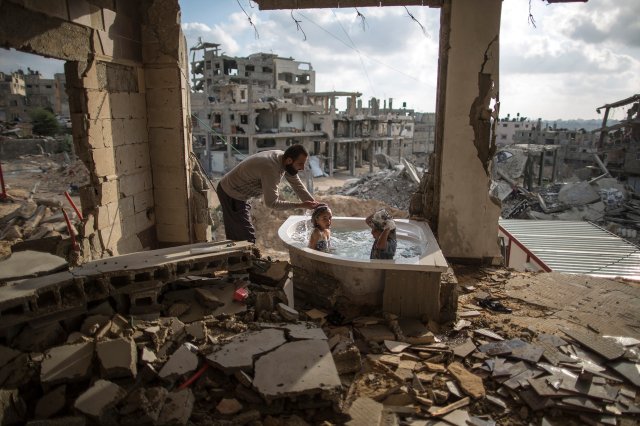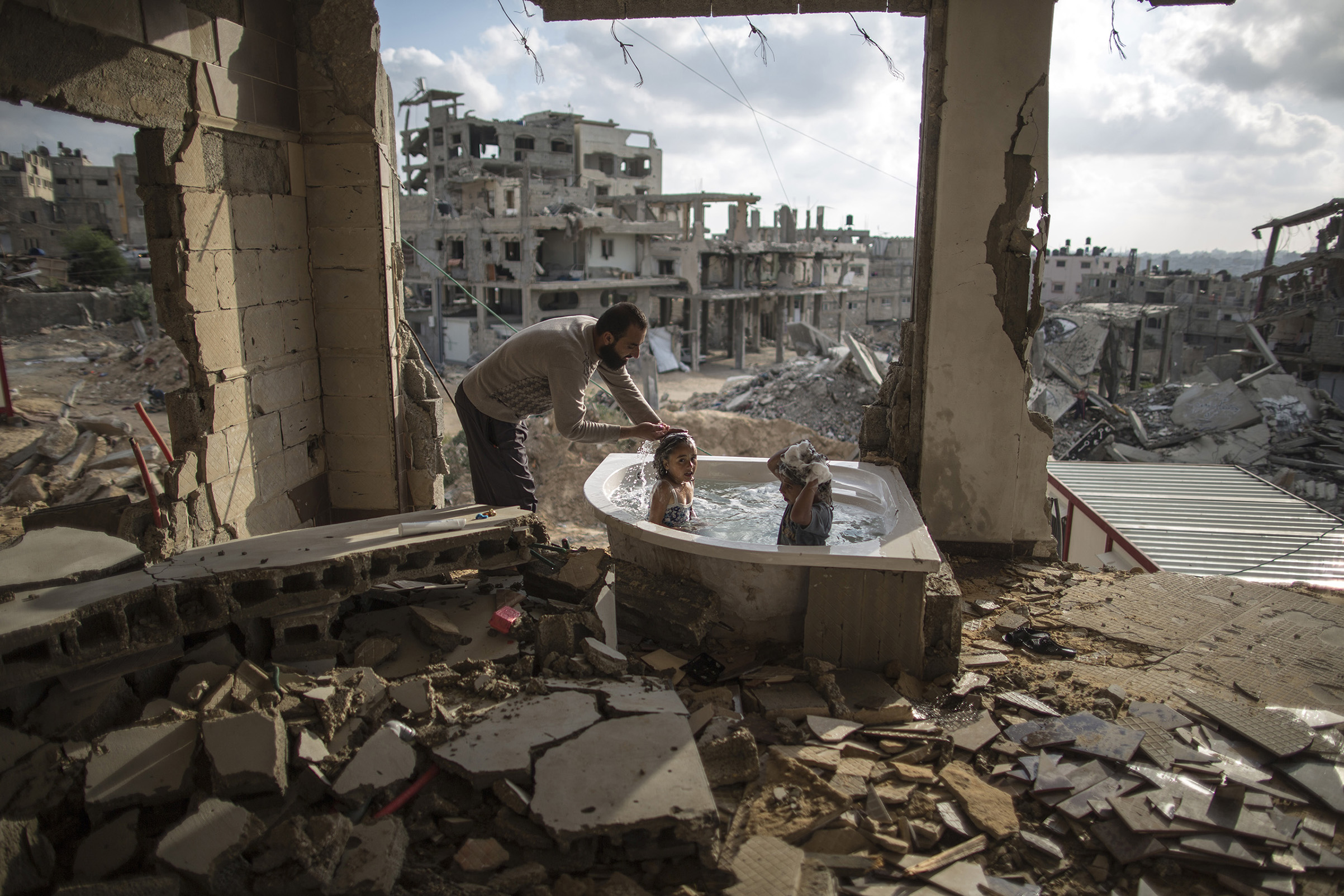At Home in Gaza
text By paul moakley | Photographs by Wissam Nassar
Wissam Nassar, a Gaza-born photojournalist who has worked in the coastal enclave for the past eight years, has seen it all. He lives a life surrounded by war and reconstruction but finds the most authentic images he makes as a photographer in the subtler moments of reprieve.
“My family and I are refugees,” Nassar tells TIME, as he recalls growing up in Gaza as one of eight children from what he calls a very “working class family.” Nassar was first inspired to begin documenting Gaza’s most turbulent times while in college. He began his professional career covering the past three Israeli-Hamas wars in 2008, 2012 and 2014.
Nassar’s photographs show his homeland mired in a slow-motion recovery from the weekslong conflict that started July 8, 2014, and formally ended with an Aug. 26 ceasefire that has largely held since. Even so, daily existence is like life during wartime: This summer, Gazans have electricity only two to four hours a day, their power supply caught between rival governments in Israel, Egypt and the West Bank. In this surreal landscape, Nassar finds familial scenes; a young father bathing his kids, children playing, families sharing a meal.
“I focus on how the people want to live normal lives,” he says, “spending time at parks, beaches and coffee shops despite the rubble scattered everywhere.”
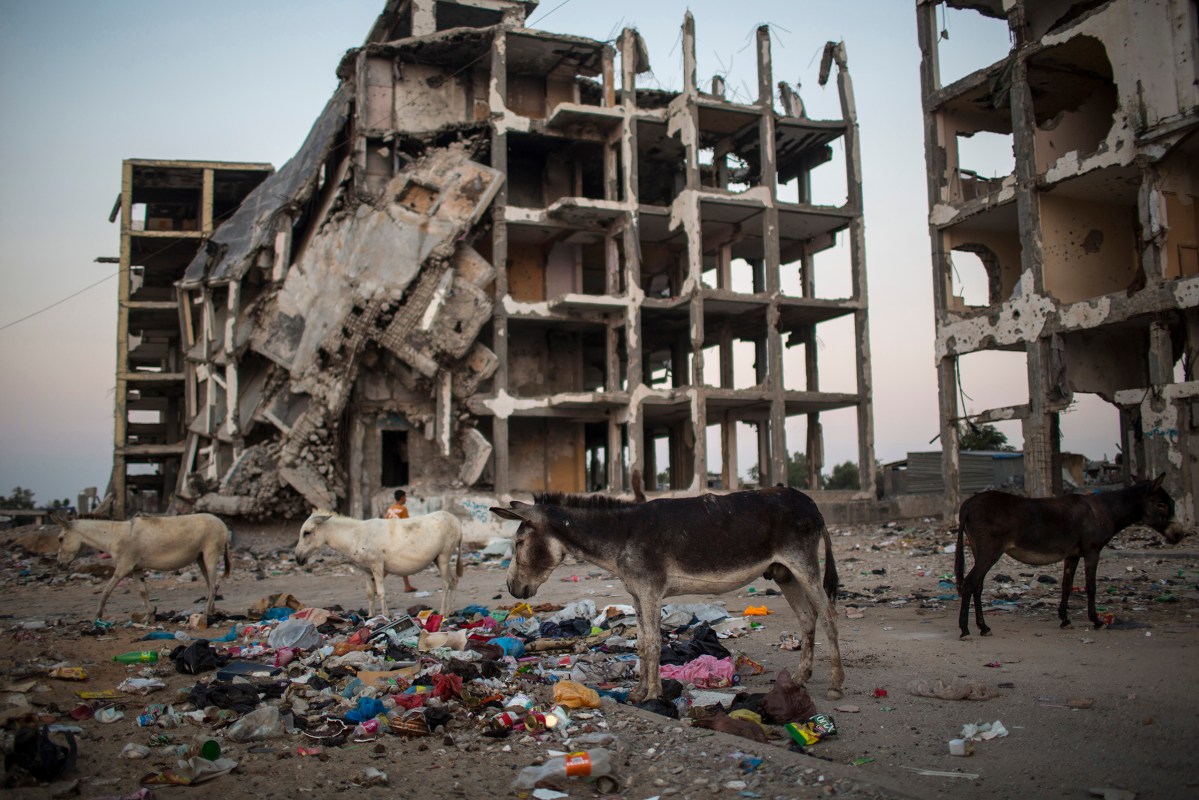
Donkeys graze near destroyed buildings in the northern Gaza Strip, July 2015.
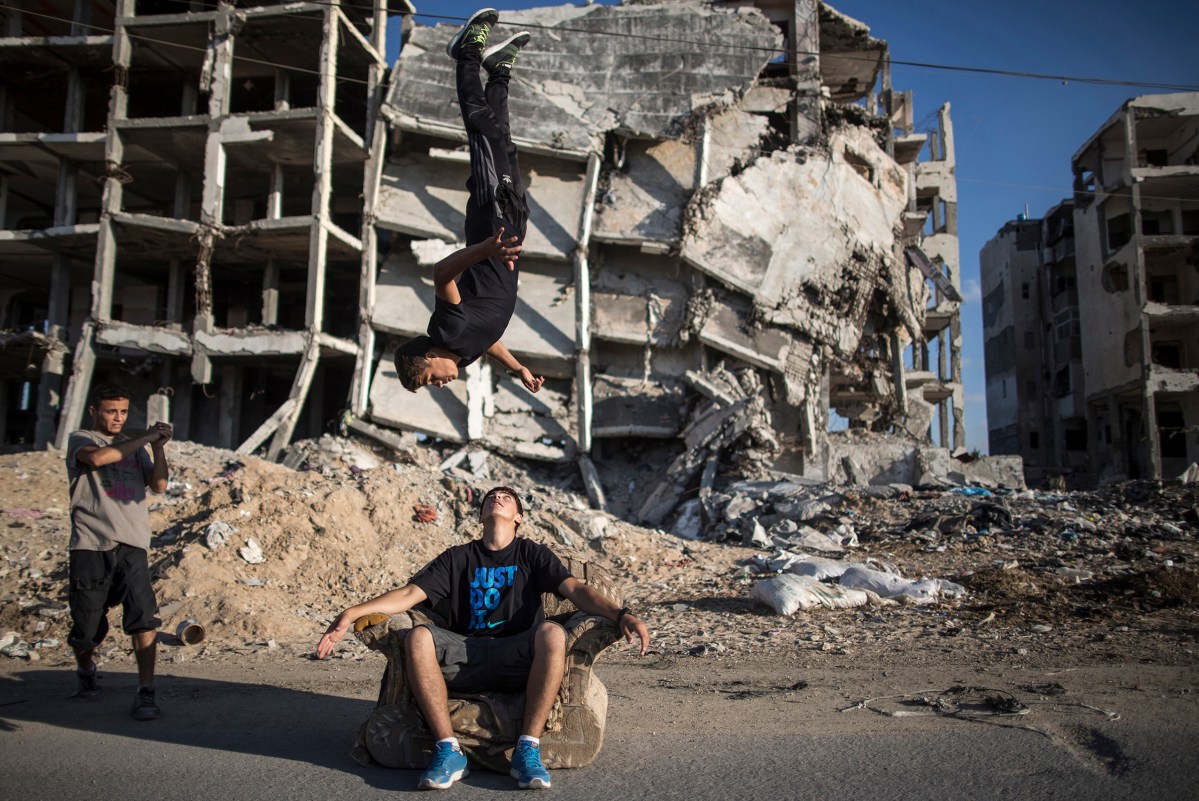
Young men practice parkour, June 2015.
Nassar, 32, began making photographs back in college while studying journalism at the Islamic University in Gaza. “There wasn’t a department that taught photography,” he says. In 2003, his freshman year, he began training with international photo agencies. “That was the greatest classroom for me,” he adds.
One of those agencies was Ma’an, a respected local news agency. “Ma’an had an agreement with AP and so my photos were then being published on the AP wire and I was also working with Xinhua, a Chinese news agency,” he recalls. “That is when other news outlets began to reach out with assignments.” He started taking photographs regularly for The New York Times in 2012, covering the assassination of the Hamas official Ahmed al-Jabari, and the ensuing war.
A key turning point in his career really came during the war in 2014 when his pictures began to make the front page of the Times. “A moment that I will never forget,” Nassar recalls, “I was photographing Sumaya Hasna, a four-year-old girl whose home was destroyed. Sumaya was separated from her family at the hospital and I followed her as she was being treated. She was scared, all alone and lost in the chaos at the hospital’s emergency room.”
“The last war left massive destruction in Gaza,” says Nassar. Nearly 142,000 housing units were impacted by the conflict, according to the United Nations—a level of destruction not seen in previous wars. “During the coverage of these houses, I witnessed people fleeing their home while others were still trapped under the rubble. I saw these devastated families, weeping, screaming and looking with great grief at the remains of their demolished homes.”
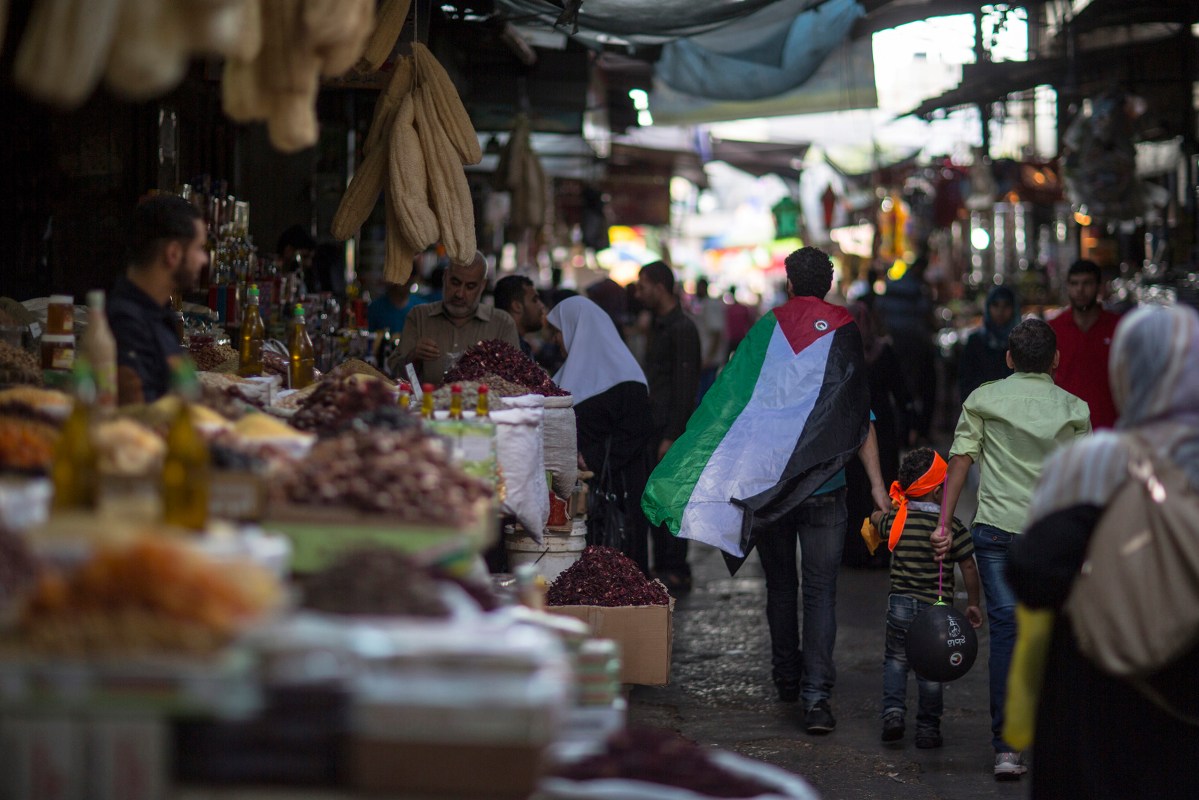
A man wears a flag through a market, July 2015.
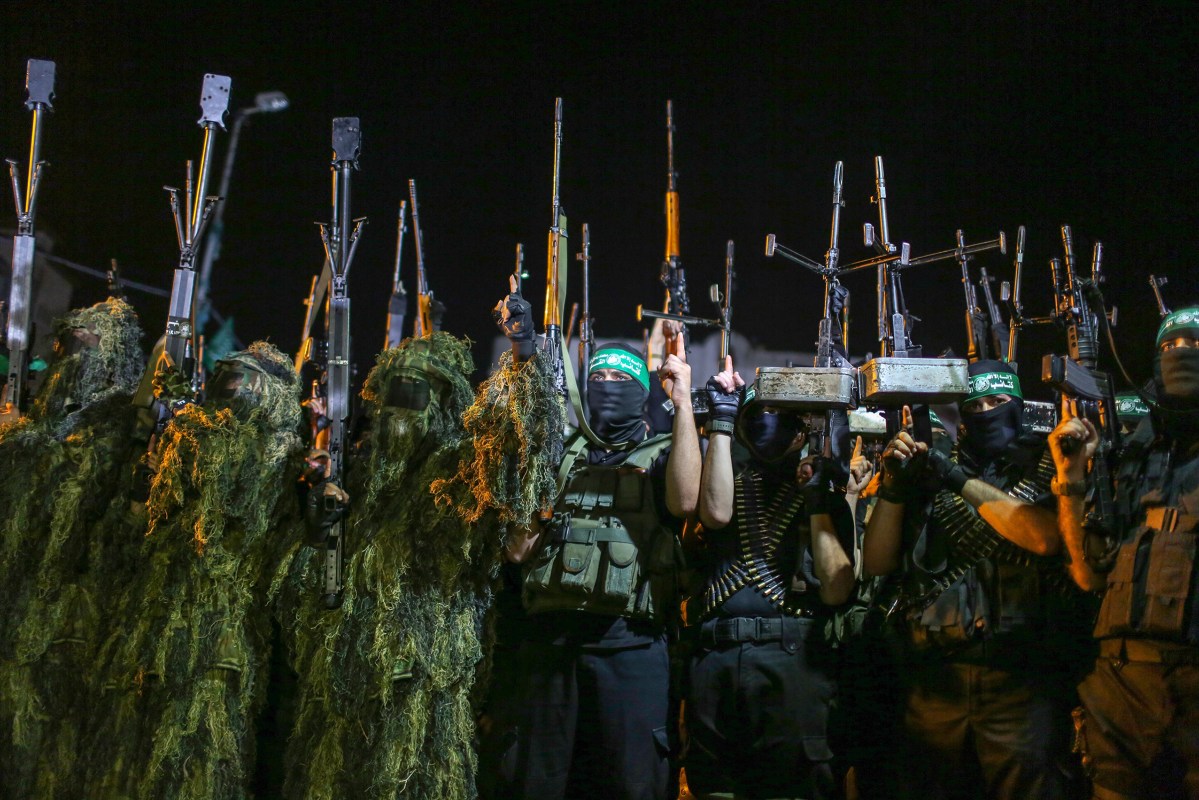
The Izzedine al-Qassam Brigades, the military wing of Hamas, mark the first anniversary of the 2014 war, July 2015.
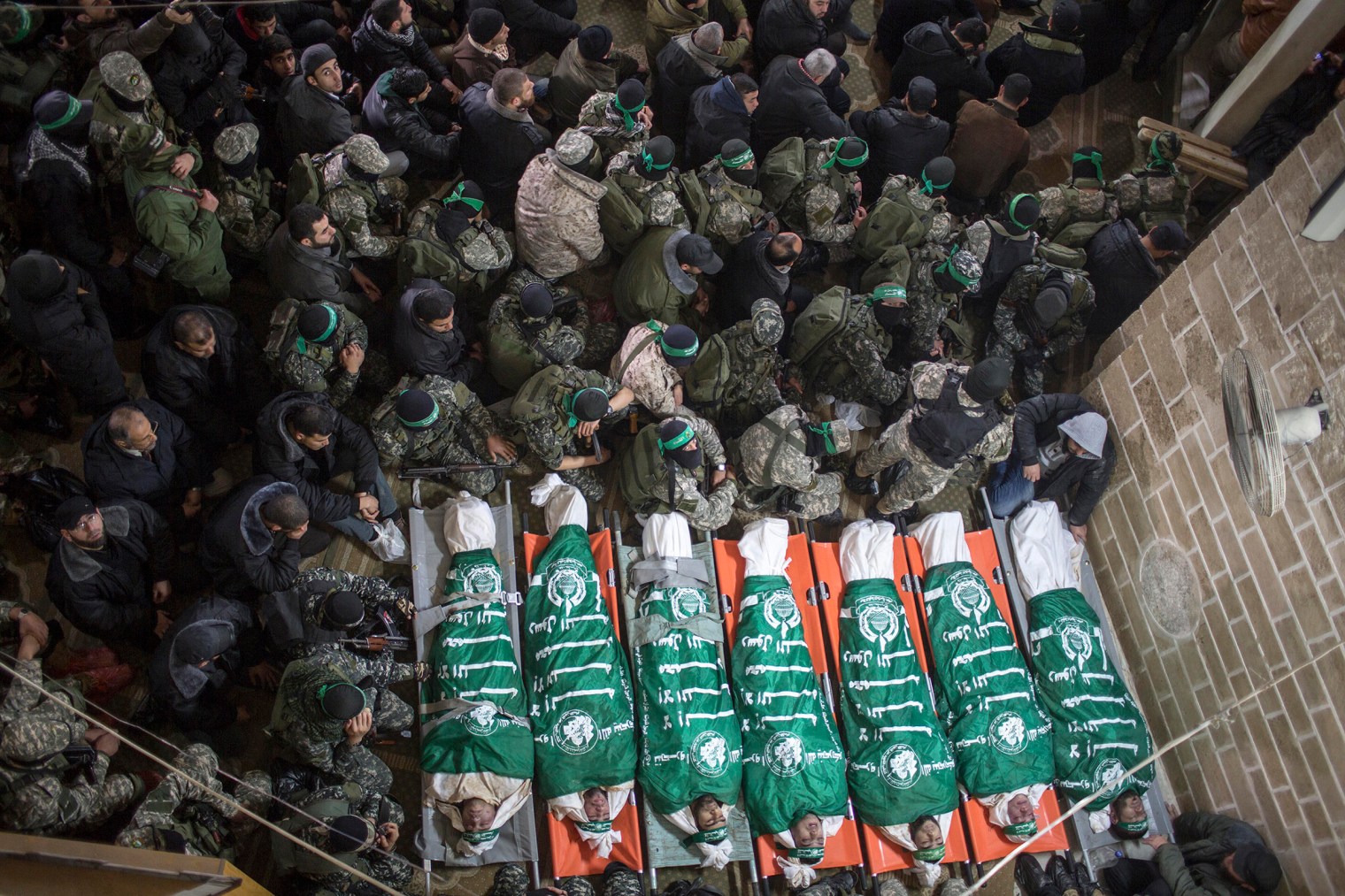
Mourners from the Izzedine al-Qassam Brigades at a funeral of seven fighters in Gaza City, January 2016.
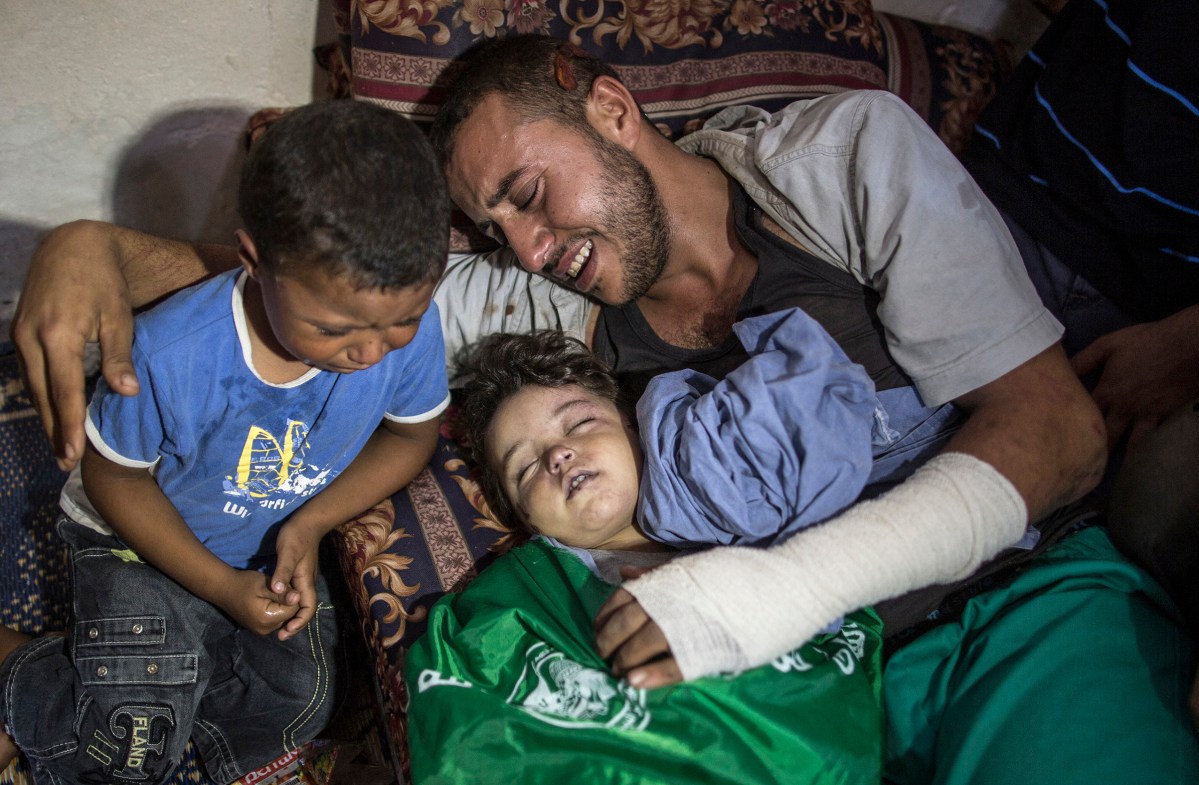
Yehiya Hassan and his son cry over the body of Rahaf, 2, killed in an airstrike, October 2015.
During this time, Nassar’s experiences began to deepen his outlook. “I wanted to illustrate the resilience of the people of Gaza,” he says, “as they rigorously tried to continue their lives after such a devastating war. Many people did not wait for their homes to be repaired or rebuilt, and instead returned to their dilapidated homes, setting up tents on the rubble of their completely destroyed houses fearing that they might be uprooted from their own birthplace.”
He explains that most people in Gaza, like anywhere else in the world, want to enjoy the finer things in life. “People abroad think that Gaza is inhabitable,” he explains, “and that the people of Gaza are desperate. However, Gaza is a very beautiful place with hotels, coffee shops and resorts overlooking the beach.”
“The main problem faced by the people of Gaza,” he says, “is the restriction of movement due to the continuous closure of the Rafah Crossing [to Egypt]. This has lead to a state of distress for many people who would like to find work, study or receive specialized treatment abroad or spend their holidays outside the country.” One day Nassar hopes to have more of an opportunity to make a name for himself outside Gaza and pursue international stories. In 2015, he was selected by a panel (which included the author of this article) for the World Press Joop Swart Masterclass in Amsterdam, where he studied with an international group of photographers and editors.
Despite being witness to so many periods of war and recovery, Nassar says, “a strong feeling in my heart motivated me to keep working.”
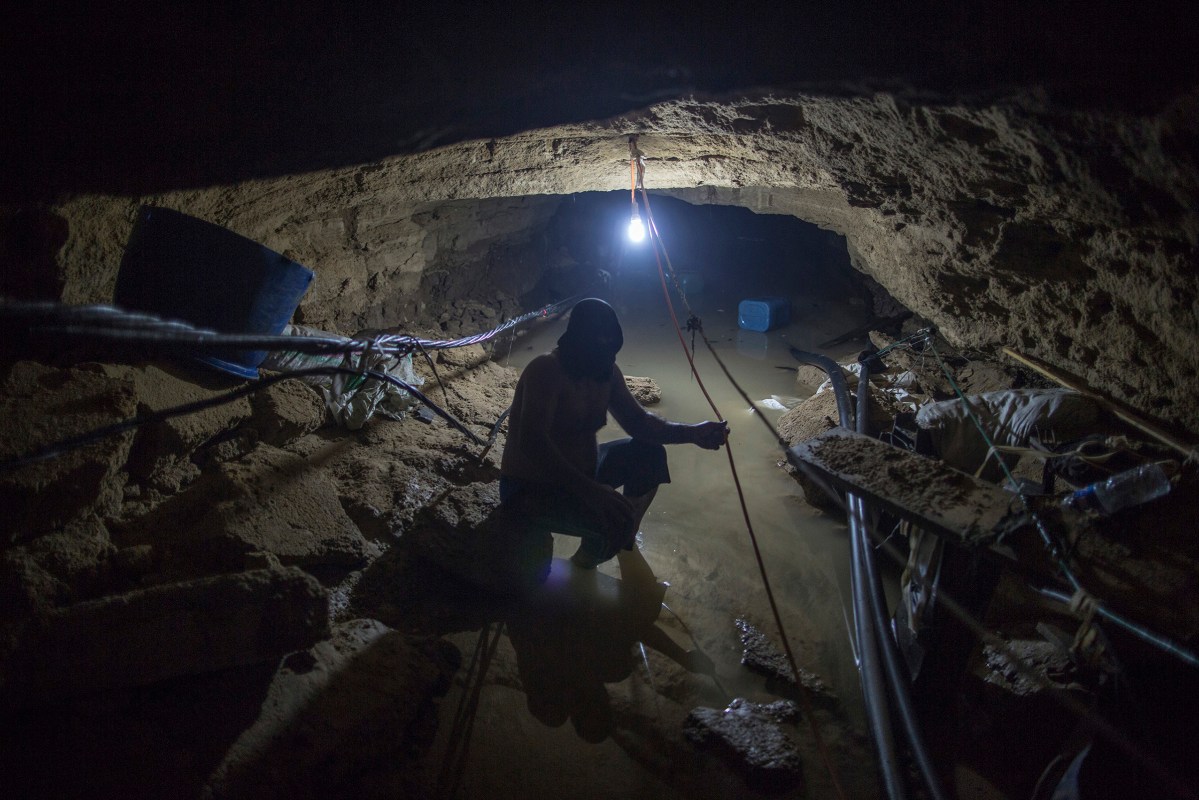
A smuggler pumps water out of a tunnel flooded by Egyptian authorities in Rafah, October 2015.
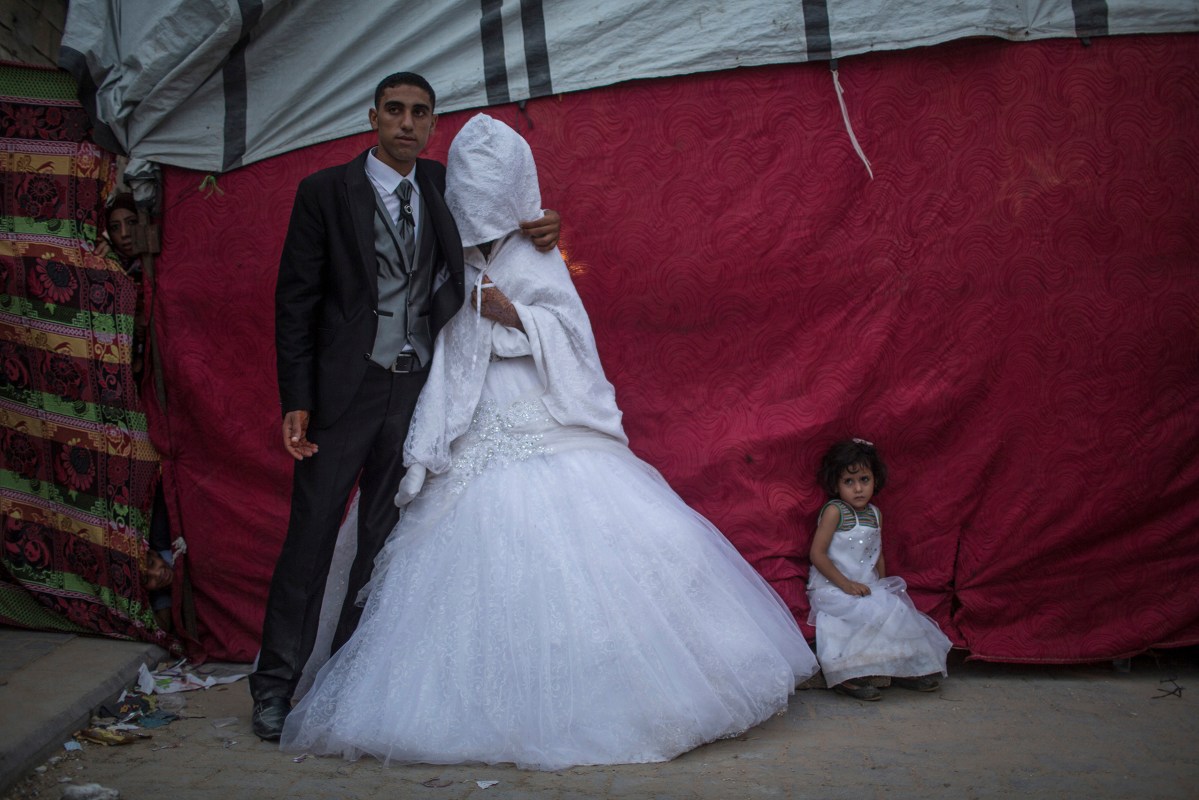
Mohammed Yousef Al-Masri, 23, and his bride Zekriat Hamza Al-Masri, 20, pose by their makeshift tent, October 2015. Their homes were damaged in the 2014 war.
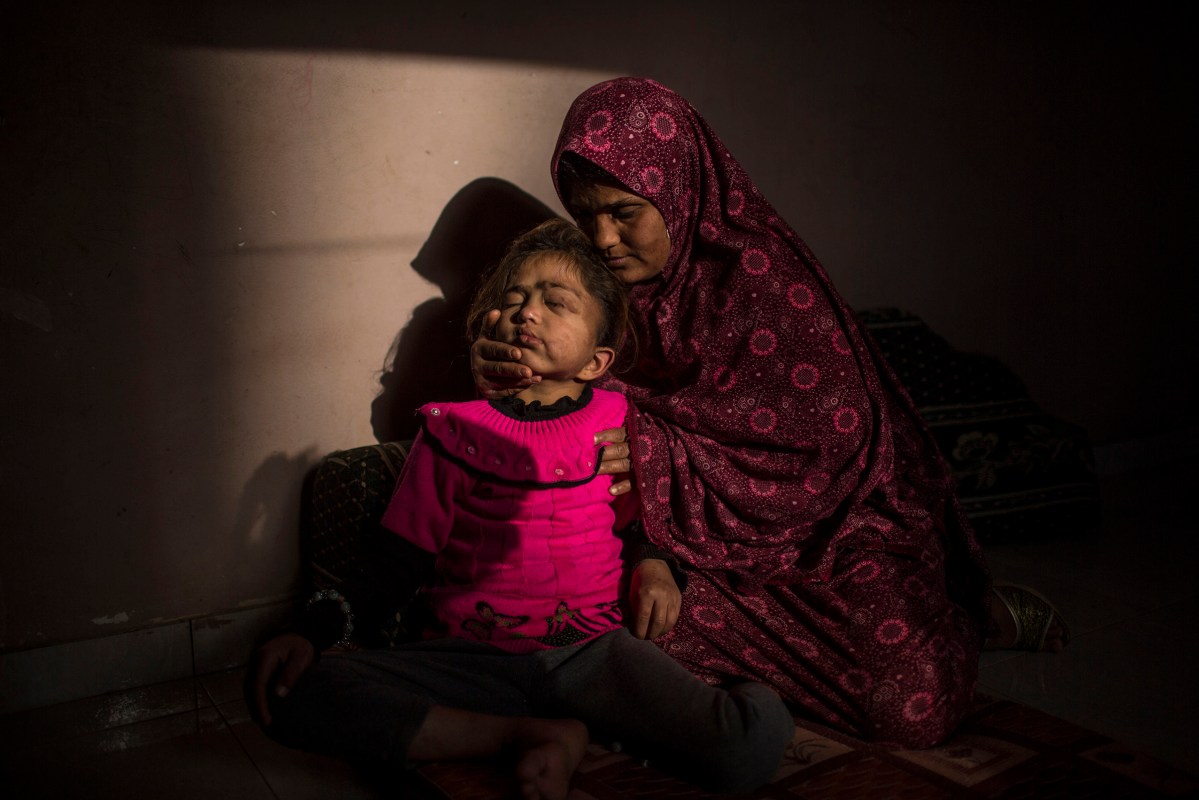
Samah, holding her daughter Enshirah, 8, suffers from brain cancer and lives in poverty in Beit Hanoun.
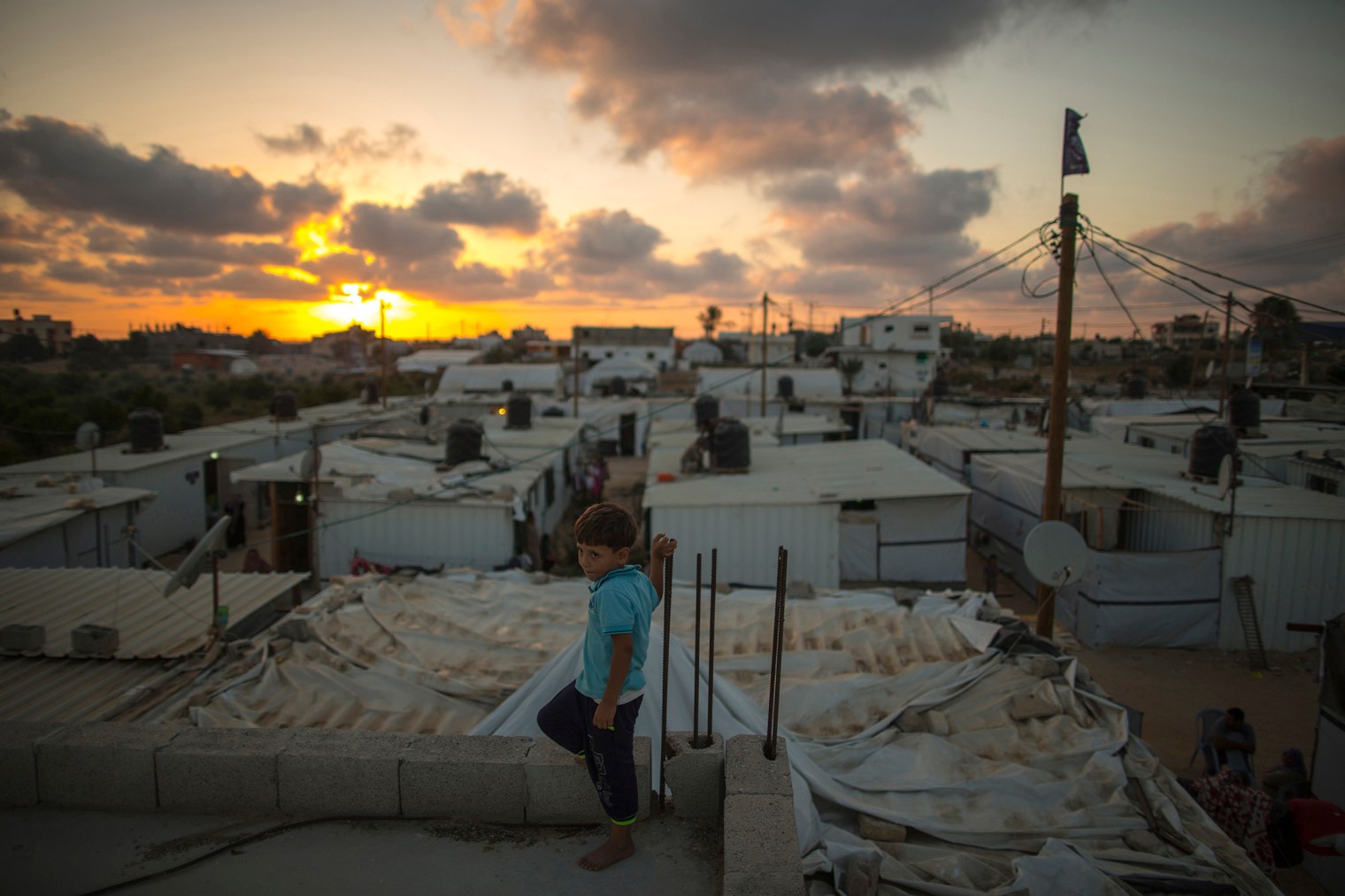
A view of Khuza’a, east of Khan Yunis in the southern Gaza Strip, July 2015.
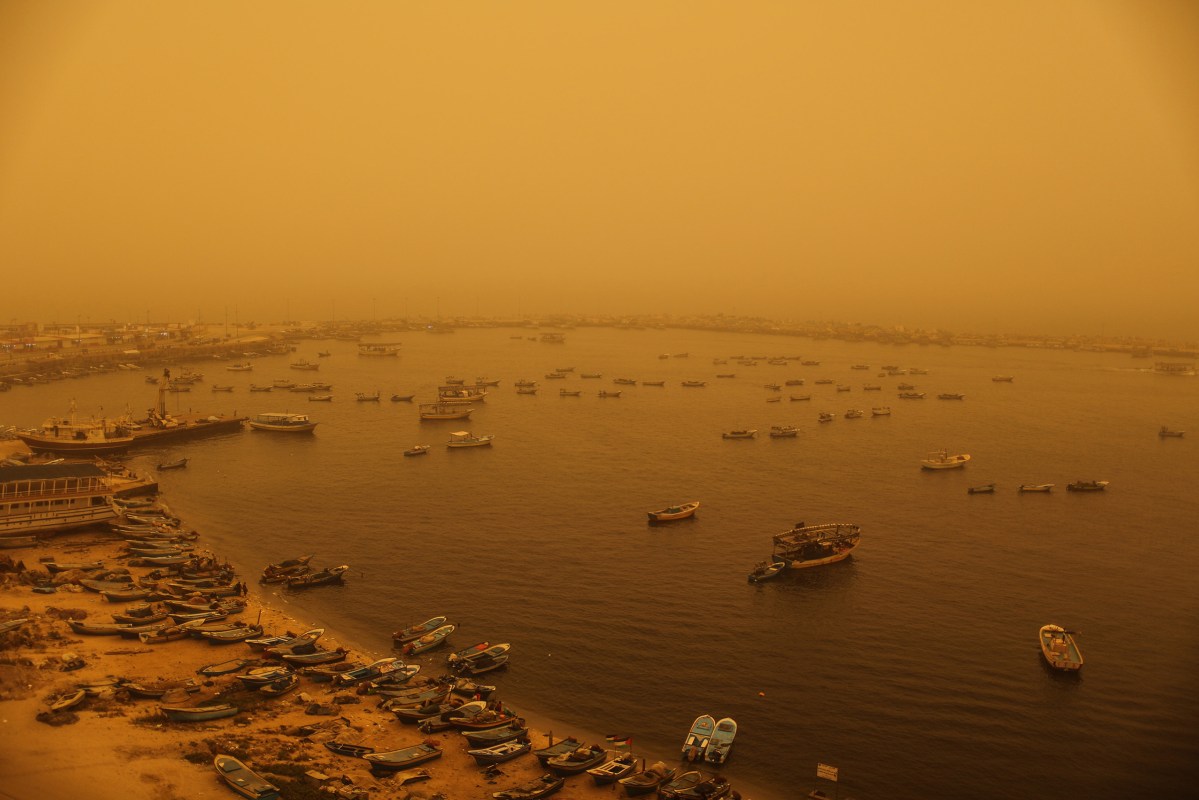
A sandstorm shrouds the Gaza Strip, September 2015.
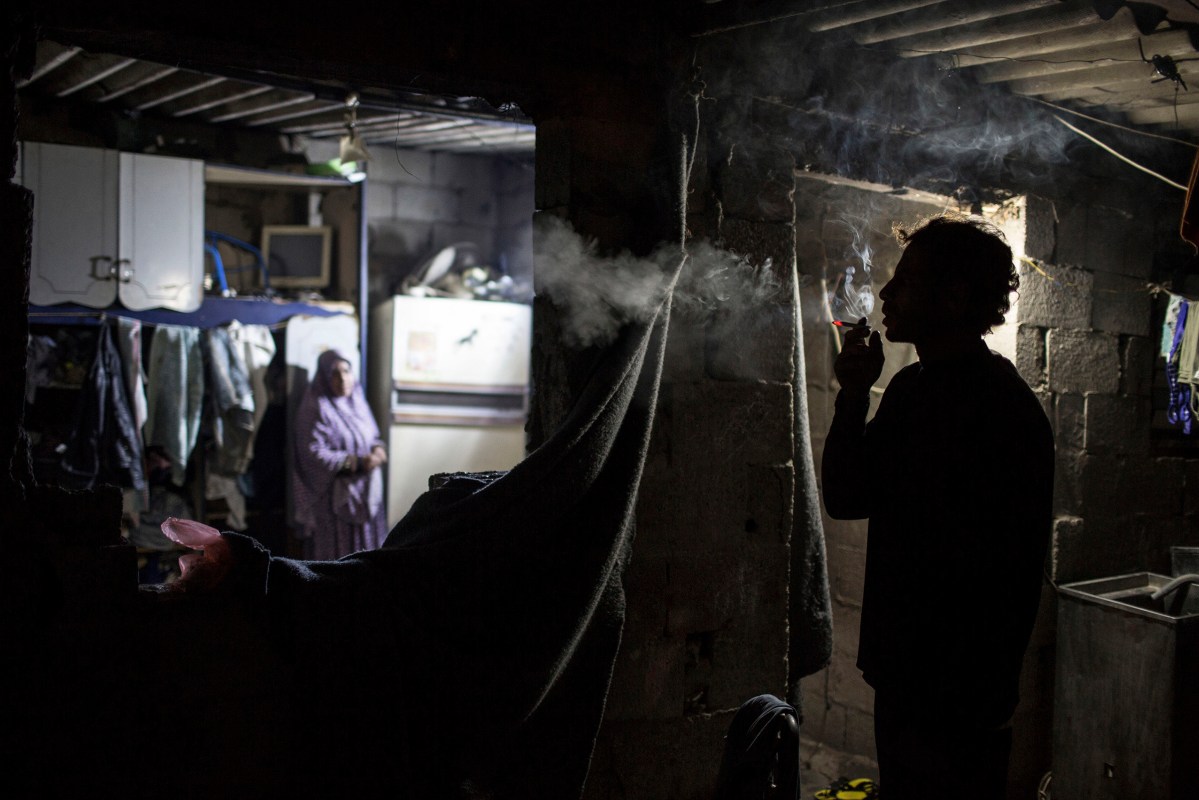
Ahmed Zayara 39, smokes at home in the Zeitoun neighborhood of Gaza City, February 2016.
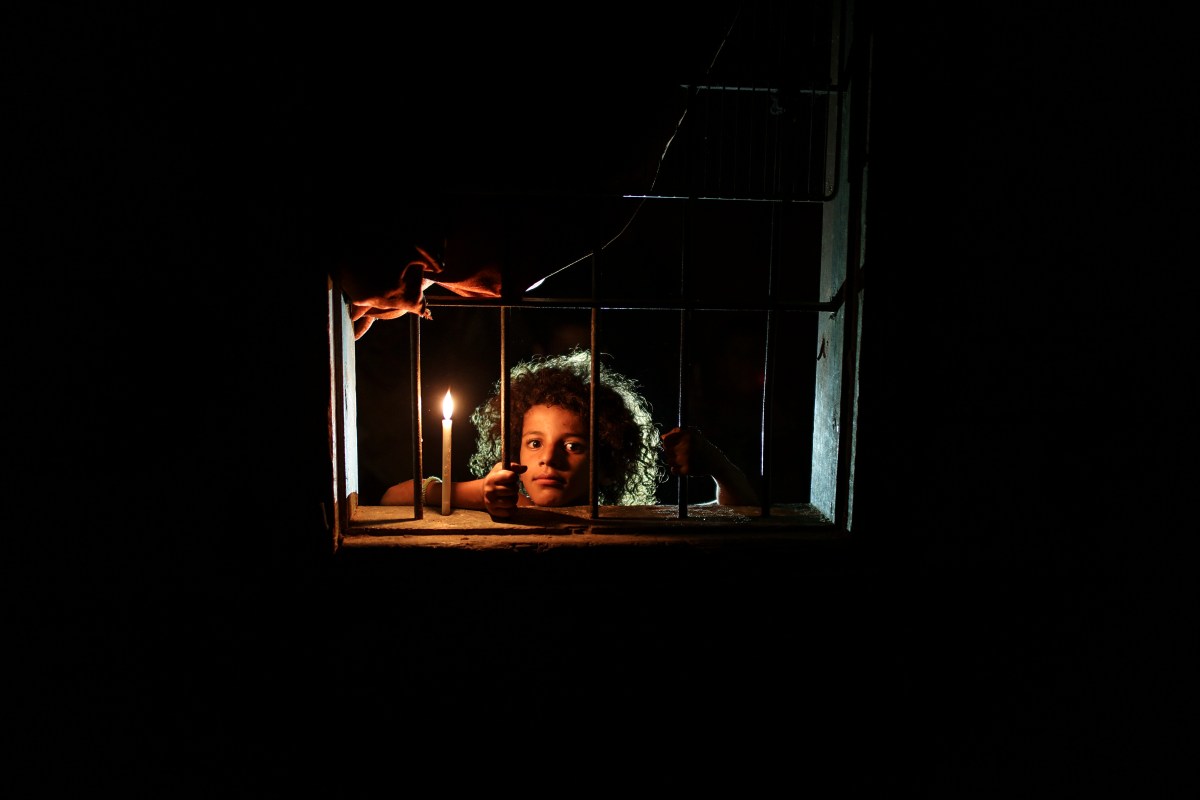
Sara Abushawish, 9, at her family’s corrugated iron sheet house in the Zeitoun area, August 2017.
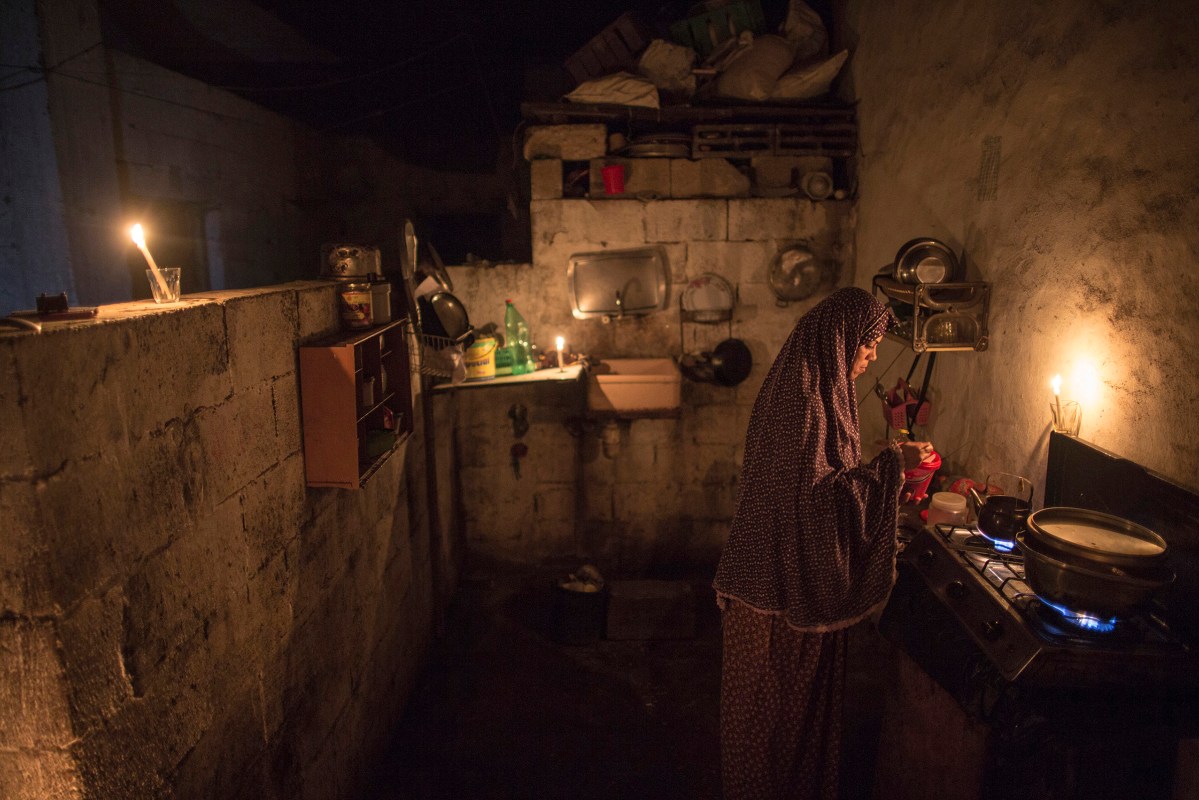
Eman Darabi, 32, cooks for her family during a power outage in Beit Lahia, September 2015.
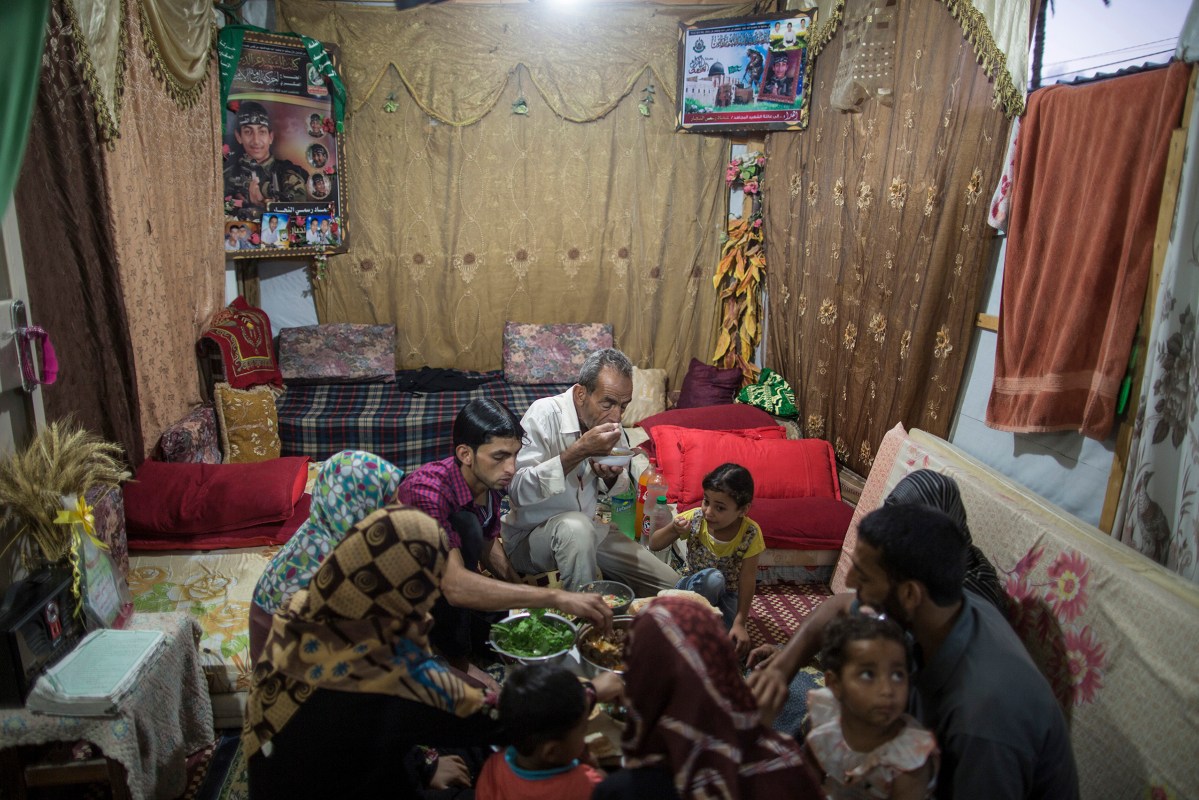
The Al-Najjar family breaks their fast in a caravan where they are staying since their home was demolished, July 2015.
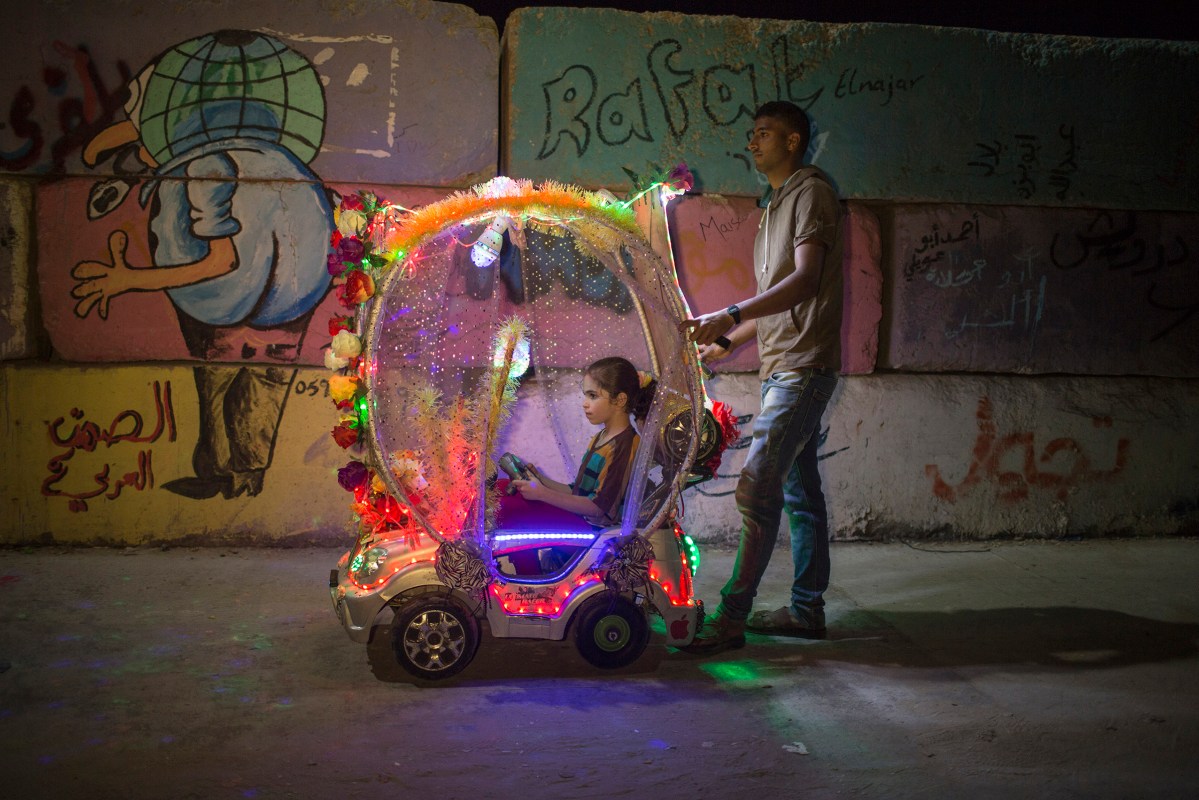
A girl rides in a colorful electric cart, June 2015.
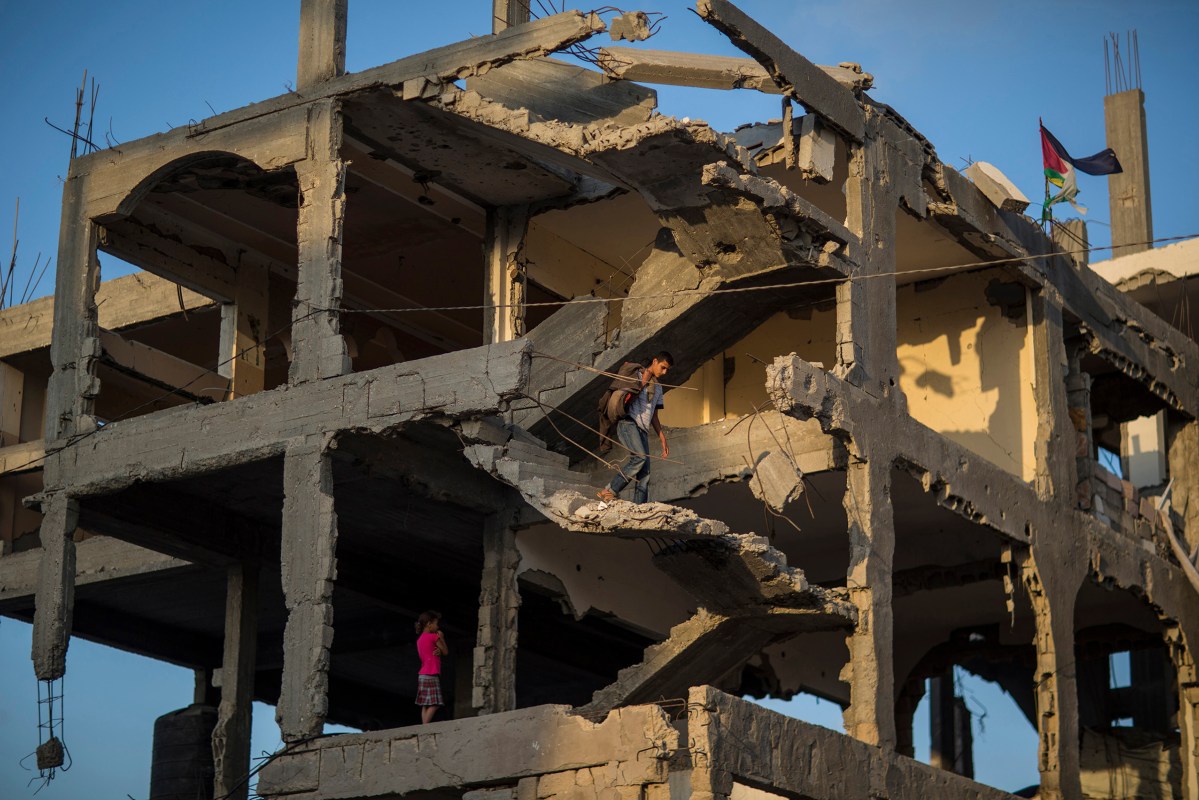
Ahmed Atawna on the stairs of his demolished house, July 2015. The family lives in a tent nearby.
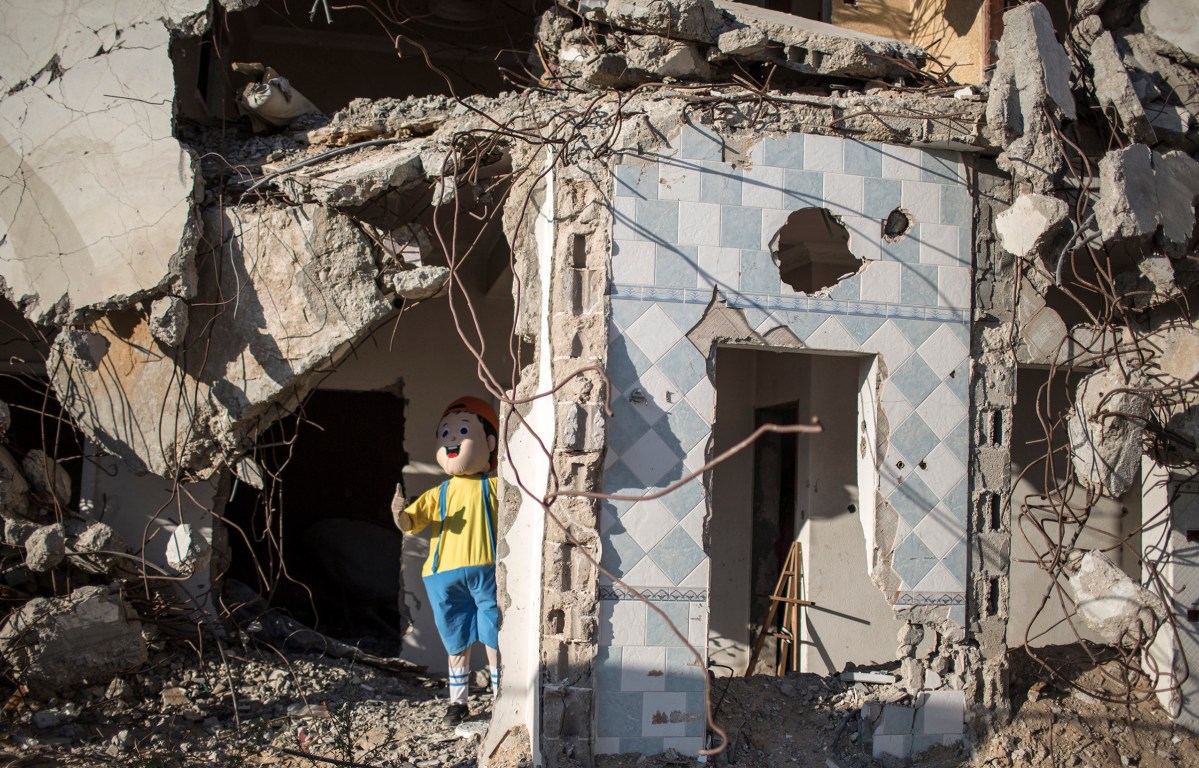
Performers in the ruins of the Shujaiya neighborhood on the first anniversary of the 50-day war, July 2015.
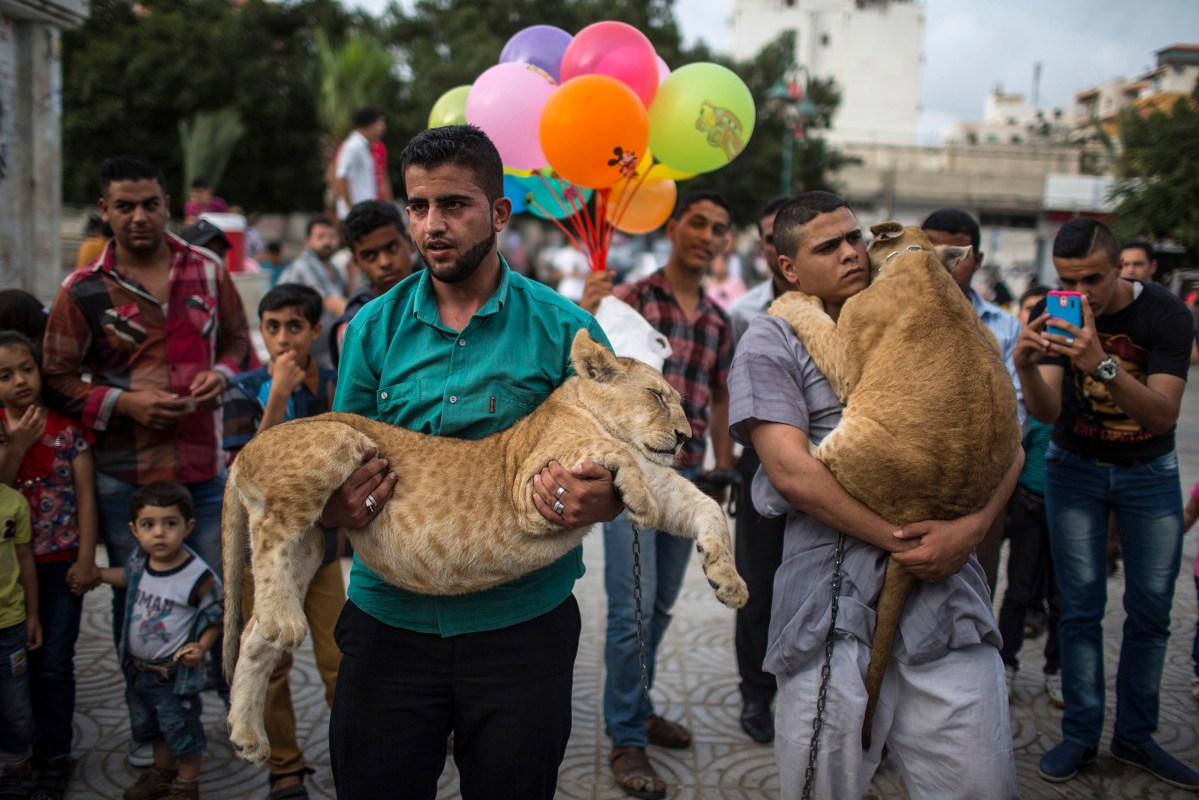
Residents gather at Gaza City’s “Unknown Soldier” square to photograph lion cubs a local man kept as pets, May 2015.
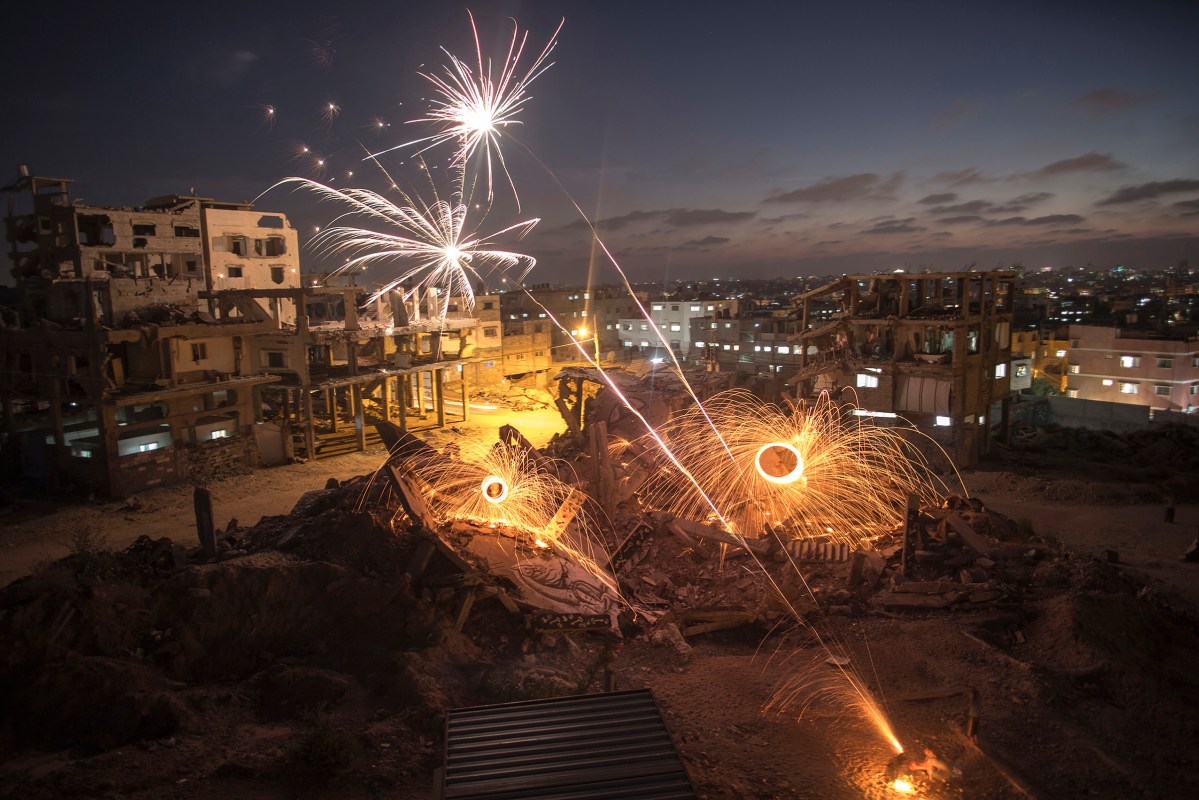
Young men set off fireworks during Ramadan in the Al Shaaf neighborhood, July 2015.
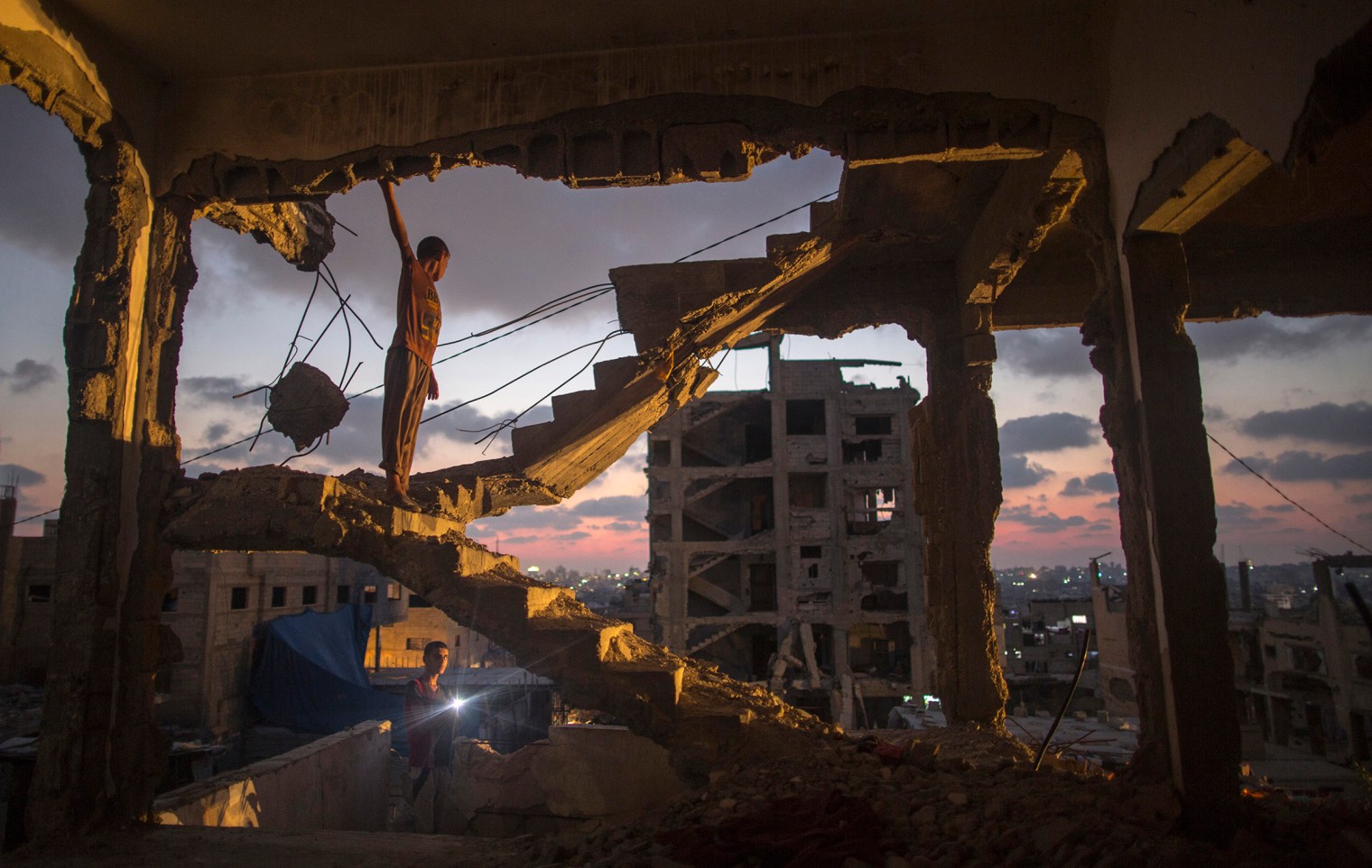
Ahmad Atawna, 10, amidst the rubble of his family’s home during a power outage, July 2015.
— With reporting and translation by Rami Nazzal/Ramallah
Wissam Nassar is a photographer living in Gaza. Follow him on Instagram @wissamgaza.
Paul Moakley is TIME’s deputy director of photography and visual enterprise. Follow him on Twitter @paulmoakley.
